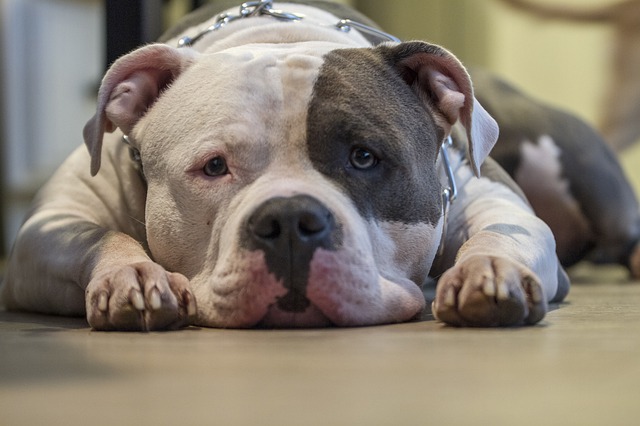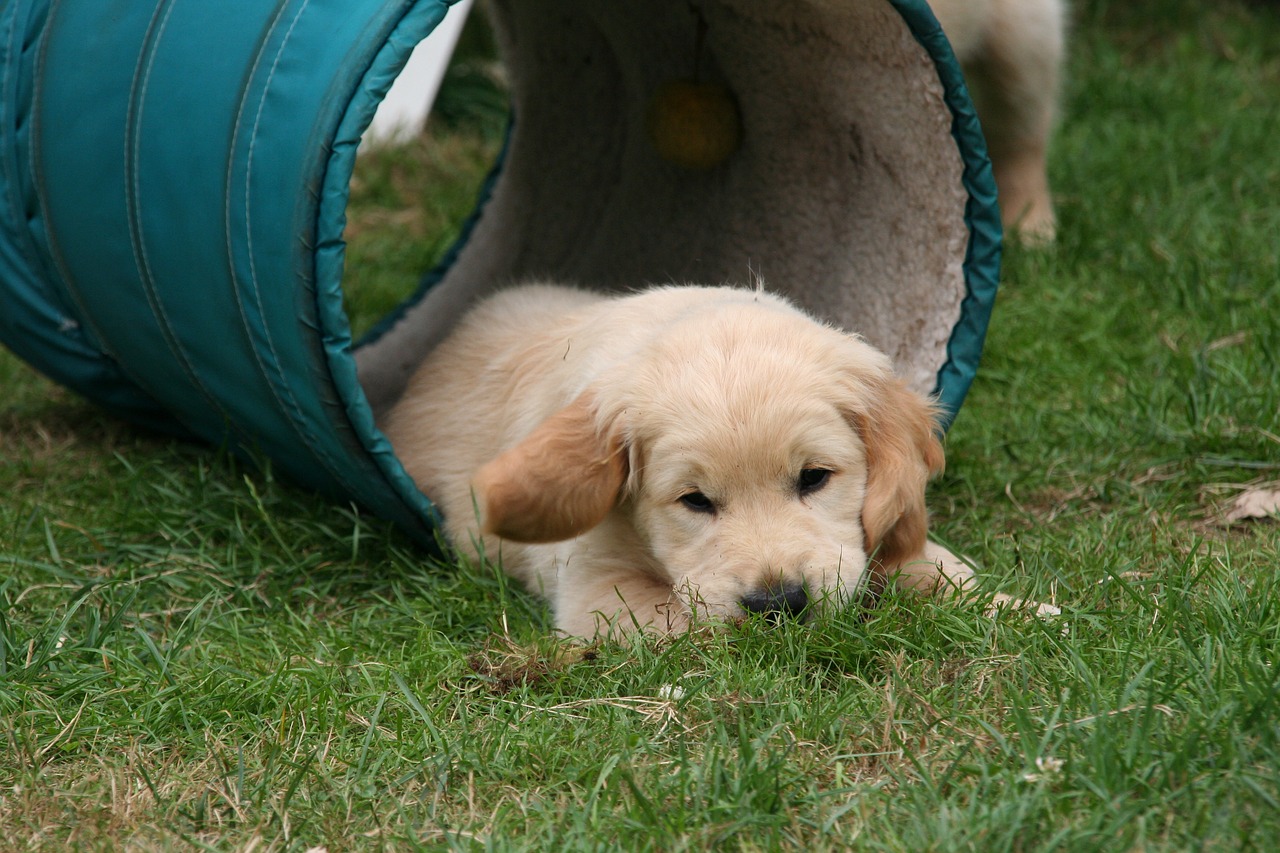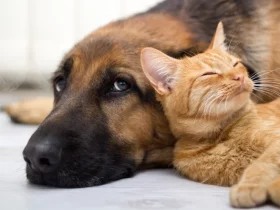Bad breath in dogs can indicate a serious underlying problem that should be looked into right away.
Many people never bother, but you should provide your dog with a dental care routine which consists of brushing his teeth – preferably daily but at least weekly and providing yearly dental checkups with your vet.
If your dog has bad breath you should alert your vet and have him checked out. At the very least, they will recommend enzymatic toothpaste that will help fight bacteria. Sometimes you will need to have a teeth cleaning or “scaling” which involves scraping the built up gunk off your pets teeth.
Please read the article below by Dr. Carolyn Schweitzer which describes in depth the serious nature of oral hygiene for dogs and describes how you can help your dog be healthier while getting rid of his bad breath.
Why “Doggie Breath” is nothing to joke about.
Author: Carolyn Schweitzer
Your dogs health is important to you. You show him how important by keeping him well fed and groomed, making sure he gets plenty of exercise and providing a collection of fun, safe toys for his entertainment. You don’t skimp on the quality of his food. And to reward good boys and girls, there are always lots of delicious treats in the cupboard.
But if he has bad breath, you could be overlooking a serious problem with your dogs health.

“Dog Breath” is such a common condition that we make jokes about it. Sometimes we even tease our human “friends” using “dog breath” in play-ground style name-calling ( although hopefully this is limited to teenage boys.) And I know many pet owners who comment that they love their dog or cat like a child, but just can’t stand the smell of the animal’s breath! Well, guess what? “Dog Breath” isn’t normal. It’s estimated that 80 percent of dogs and 70 percent of cats over the age of three suffer from the periodontal disease — a serious deterioration of the gums and supporting bones of the teeth.
Yes, it’s periodontal disease that’s responsible for “dog breath”. But the problem doesn’t confine itself to your furry baby’s mouth. It’s an infection, and the tiny creatures responsible for it can break loose and enter the bloodstream. Once they do, they can infect vital organs such as the liver and kidneys, endangering your dogs health by causing a far more serious illness.The best way to insure your dogs health, especially where periodontal disease is concerned, is with prevention. It can make all the difference.
Periodontal disease begins as gingivitis, which is virtually harmless and completely treatable. If allowed to move to the next stage–Periodontitis– it can be stopped, but not cured. And the worse it gets, the faster it progresses. This applies to all animals, two legged and four legged alike. Think of a car parked at the top of a hill. The emergency break is released, and the car begins to roll downhill. Now, if you hit the breaks right away, no harm done. But the farther the car rolls the faster it goes, and the more momentum it builds. It gets harder and harder to stop it. By the time it’s halfway down the hill, you could be headed for disaster! You can maintain your dogs health nicely with proper home care. But, like the rolling car, if disease is already present, stopping and controlling it is a bigger job.
Prevention involves, above all, regular veterinary checkups and professional cleanings beginning early in your dog or cat’s life. I’ll show you how you can help maintain oral health at home, but it’s impossible to do a thorough cleaning on an animal who’s awake. Trust me on this. It’s hard enough to do a thorough job with a cooperative human patient. When we’re talking about animals who don’t understand what we’re doing or why, forget about it.
Most veterinarians recommend annual cleanings, but more frequent or involved treatment may be needed depending on your animal’s condition. Please, no matter what you’re doing at home, follow the vet’s recommendations. As for your part, introduce your dog or cat to the idea of having his teeth brushed as early as possible. I know, it’s not easy, and it takes time and daily conditioning to get your little guy or gal used to it. But your dogs health is worth it!
So how do you prevent the most common of threats to your dogs health? Brush her teeth, of course! Every day. Just like you would your own (twice a day for you, and floss too!!). This isn’t easy, but it can become an expected part of your dog’s routine if you do it right. Here are some suggestions:
Start when your dog is a puppy. The earlier the better.
At first, you just want her to get used to you handling her head and looking inside her mouth. Practice lifting up her lips and looking at her teeth and gums–front, back and both sides of her mouth.
Now begin gently touching the gum tissue with your finger and rub along her gums and teeth as if your finger were a toothbrush. Let her get used to the sensation. This is exactly the way you would introduce a human baby to brushing, beginning with just her gums. Even before there are teeth, there are harmful bacteria. So don’t worry about a tiny puppy who doesn’t have a full set of teeth yet–rub her gums, swab out her little mouth with your finger, and get her used the this kind of contact from her owner.
Your next step is to wrap gauze or a soft washcloth around your finger and rub the gums on both the outer and inner surfaces of the teeth.
Finally, introduce a tooth brush in one small area. As your dog gets used to the brush, you will be able to use it in place of the gauze or washcloth. Remember to brush the inside surfaces!
A little brushing a day, beginning with the first step and working your way up gradually, will eventually lead to a one to two minute session. Your dog will learn that it doesn’t hurt and that she gets a couple of minutes of your undivided attention every day. It generally takes 8 to 16 weeks to get there, but in the end your dog will accept brushing as part of her daily routine.
If a little brushing is done every day at a set time, eventually your pet gets used to it, and some will even look forward to it. It will take most pet owners from 8-16 weeks until the pet accepts it readily. Now the pet realizes it doesn’t hurt and that it will get 1-2 minutes of your undivided attention. Your pet enjoys your attention, and will eventually wait patiently for you to brush his teeth. There’s a toothbrush with three heads that will allow you to brush all three surface of the tooth at one time, which makes life a lot easier for both of you! It also has nice, soft bristles so you won’t harm your pet’s delicate gum tissue.
There are also products that can be rubbed on the gums and added to the drinking water to help reduce bacteria in an animal’s mouth and promote the dogs health and healing. Bad breath is actually a by-product of the bacteria that populate the mouth. They break down proteins and carbohydrates from your dog or cat’s diet, and produce something called “volatile sulfur compounds”, or VSC’s. It’s the sulfur that make the breath smell extra special!
Certain dental products have an agent that neutralizes the VSC’s. Many owners have commented that their cat or dog seems to like the drinking water better when these products are added–even though they have no flavor! And there’s a gel available that, although formulated for the gums, can be very soothing for skin conditions, cuts, and surgical wounds thanks to the Aloe Vera it contains.
The best oral care products work without the use of fragrances and flavors, which entice human consumers, but don’t benefit your cat or dogs health in any way!
I was a practicing dentist for over 20 years, and I saw a lot of human patients who had terrible breath (and periodontal disease) and weren’t even aware of it. People don’t like to tell each other about bad breath. Even the dentist has to be delicate with this piece of bad news.
At least when dealing with a pet, you don’t have to worry about social embarrassment in order to address your dogs health problem! Don’t be shy, get in there and do something about it. Not only can your dog get rid of her breath odor, but she could even live 2 to 5 years longer as a result. And you’ll be able to get close again, without holding your breath.
About the author:
© Copyright 2004 Carolyn Schweitzer DDS. Dr. Schweitzer was a family dentist for 20 years and is now owner and editor of several websites.











